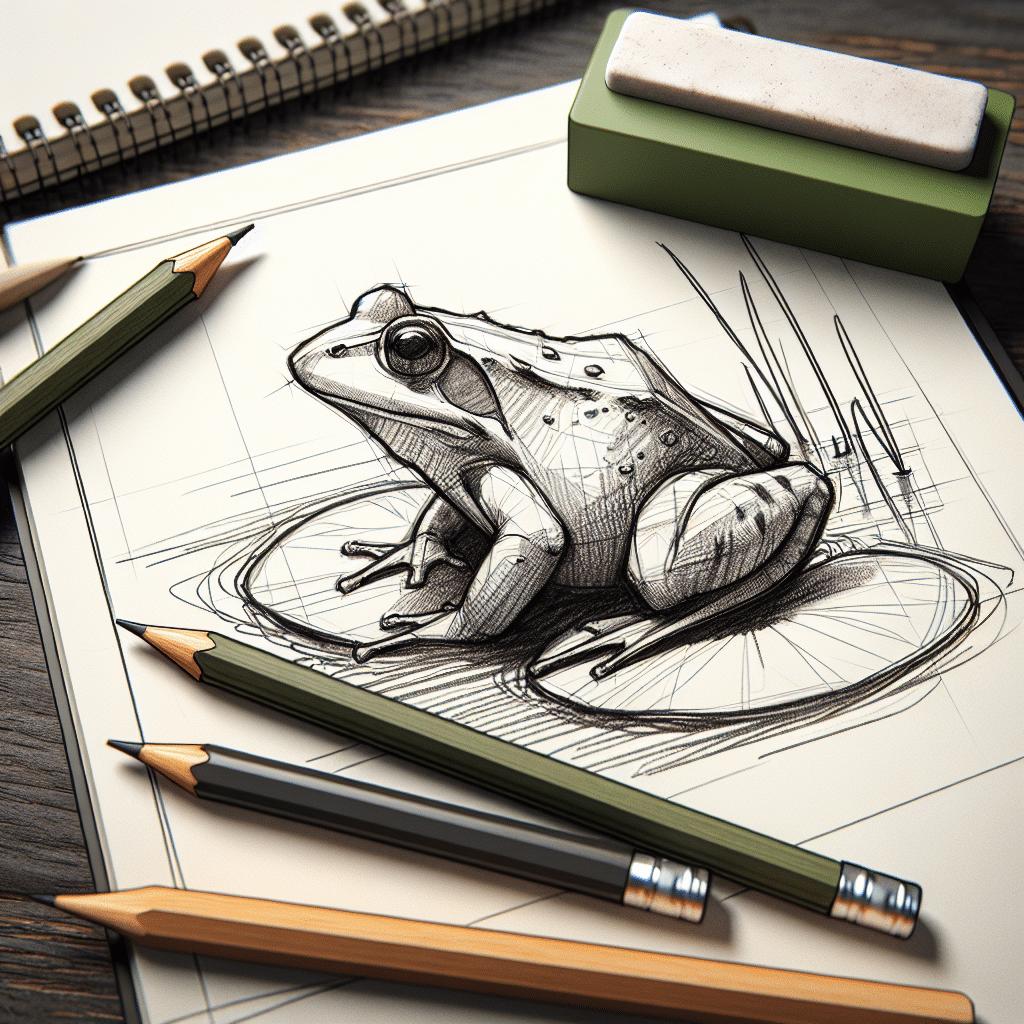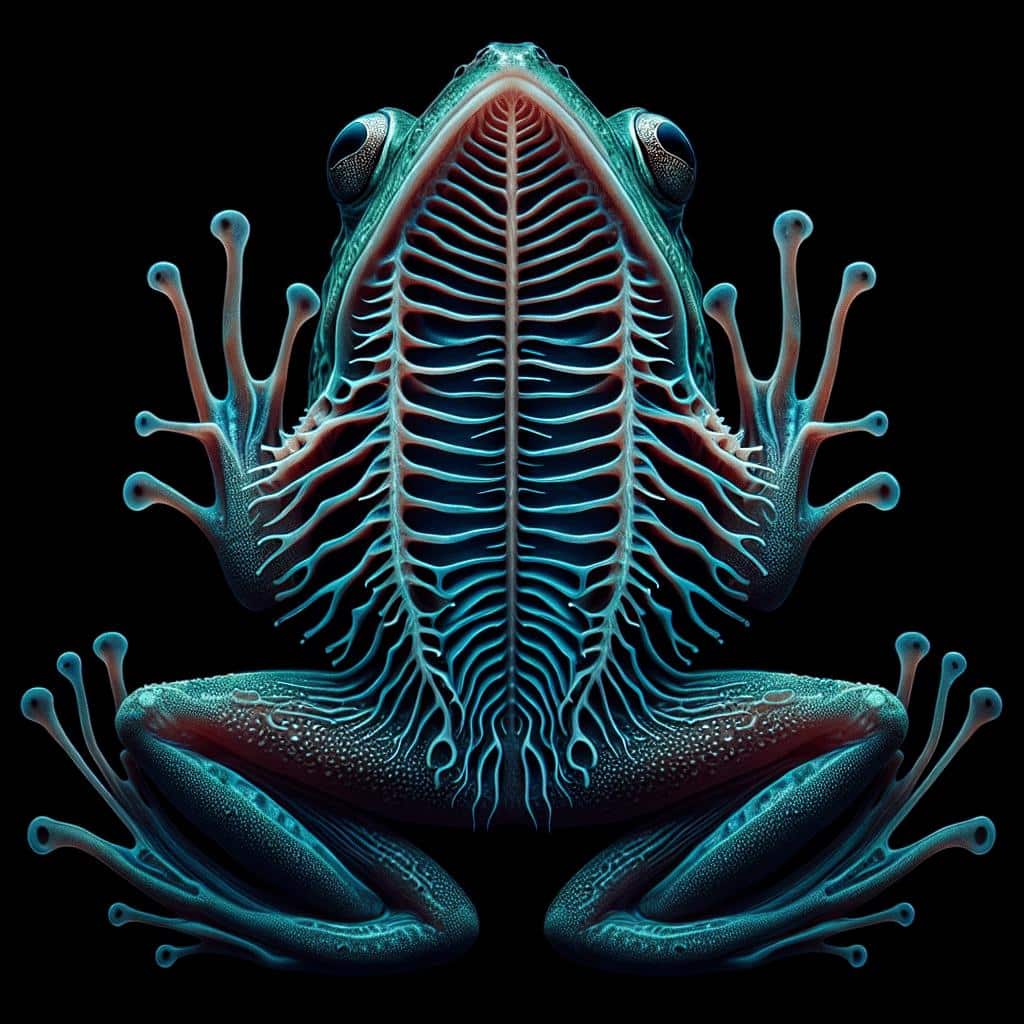Imagine you’re strolling by a peaceful pond, teeming with the vibrant chorus of amphibian life, only to witness the sudden silence of a leopard frog’s call. The circle of life never stops, and leopard frogs are no exception. In the intricate tapestry of the food web, these spotted hoppers find themselves on the menu more often than not. Your curiosity might peak as you ponder who could be responsible for such a swift interruption in the pond’s symphony. You’re about to unravel the mystery behind the predators that have a taste for the speckled amphibian known as the leopard frog.

Predation in Aquatic Habitats
When it comes to aquatic habitats, the game of survival can get pretty intense. You’re about to dive into a world where everyone has to watch their back—or rather, their fins and tails. Let’s start with the perilous journey of those little hoppy friends of yours, the leopard frogs, and the types of predators they face under the surface.
Fish as Predators of Tadpoles
Imagine being a tadpole: you’re young, carefree, and just a wriggle in the vast watery expanse. But lurking around are fish with a taste for you. Yes, your tadpole pals are not just swimming; they are on the menu for various fish species. From the relentless pursuit by sunfish to the sneaky attack of bass, these aquatic predators are a constant threat, gobbling up tadpoles without a second thought.
Aquatic Insects Preying on Eggs and Larvae
Now, fish aren’t the only concern—you’ve got the likes of dragonfly nymphs, beetles, and other aquatic insects that view eggs and larvae as their personal buffet. These critters can be surprisingly voracious, and their smaller size lets them get to those hard-to-reach nurseries where frog eggs are stashed. They slip in, eat what they can, and slip out, leaving behind a wake of destruction in the frog lifecycle.
Waterfowl Feeding on Froglets and Adults
Don’t let their serene expressions fool you; ducks and other waterfowl are also keen on a froggy feast. Picture a froglet just out of its tadpole phase, or even an adult leopard frog, these birds can quickly make a meal of them. It could be a quick dive or a swift peck—either way, these predators are skilled at scooping up frogs and making them part of their diet.
Predation in Terrestrial Environments
Now, let’s hop from the watery world to dry land where the story of predation continues, but with different players in the ecosystem.
Mammalian Predators of Leopard Frogs
Scampering through fields and forests, small mammals like raccoons, skunks, and even otters are on the prowl for something squishy. And by squishy, I mean leopard frogs. These mammals have developed a taste for frogs and will paw and dig their way to a delicious amphibian snack.
Reptiles Hunting Frogs on Land
Slithering through the underbrush, snakes have their eyes—tongues, actually—on leopard frogs too. With patience and precision, they ambush and ensnare unsuspecting frogs. And let’s not forget turtles, who might seem slow, but are surprisingly adept at catching frogs when they’re near the water’s edge.
Amphibian Competition and Cannibalism
You might think that frogs would stick together, but nature has different plans. Large adult frogs, including those from the same species, sometimes turn on their brethren, particularly the younger, more vulnerable ones. This competition and cannibalism are yet another startling aspect of life in the wild, where it’s eat or be eaten.

Avian Predators
The avian world takes to the skies, but when it comes to dinnertime, many birds have their sights set a bit lower—on leopard frogs, to be precise.
Birds of Prey and Leopard Frogs
Hawks and owls, with their keen eyes, dive from the sky with lethal precision to snatch up leopard frogs. The frogs, with their green and brown hues, might blend in with the grass, but these birds of prey are masters of their craft and rarely miss an opportunity for a meal.
Wading Birds’ Diet Preferences
Herons and egrets, the tall and stately figures of the water’s edge, are also adept at fishing for frogs. With a swift jab of their beaked spears, they can snatch up a frog in an instant. These wading birds are so good at it, you’d think they invented the game of ‘frogger’.
Songbirds and Opportunistic Feeding
Even the tune-makers of the avian world, the songbirds, might decide on a change of pace and snap up a small frog if the opportunity arises. They’re not picky eaters, after all, and a frog can be a welcome addition to their diet.
Invertebrate Predators
Let’s crawl a bit closer to the ground and consider those who creep, crawl, and skitter: the invertebrates, who are more than capable of making a meal of leopard frogs.
Beetles and Larvae as Predators
Among the leaf litter, you’ve got ground beetles and their larvae which have quite the appetite for frog remains. These aren’t your average beetles from the garden; they’re like the lions of the invertebrate world when it comes to their ferocity.
Spiders and Their Hunting Techniques
Then there are spiders—yes, even spiders can predate on frogs. With their intricate webs and stealthy hunting techniques, they can immobilize a small frog, proving that size isn’t everything in the natural world.
The Role of Ants and Other Insects
Don’t dismiss the little guys, either. Ants and other persistent insects can overcome frogs, especially when they band together. It’s truly a wild world out there, where even the smallest creature can take down a frog if the circumstances are right.

Human Impact on Leopard Frog Predators
Humans, often unknowingly, play a significant role in the predator-prey dynamic by altering environments and introducing challenges that can skew natural balances.
Habitat Destruction and Its Effect on Predator Populations
When you think of habitat destruction, you might imagine the immediate loss of homes for frogs, but it’s also reducing the spaces where their predators can thrive. This can lead to increased competition and, in some cases, may reduce predation pressure on the frogs, disrupting the natural order.
Pesticides and Chemical Pollutants
Then, there’s the use of pesticides and pollutants. These chemicals might be aimed at keeping pests at bay, but they can also poison the food chain, affecting not just the leopard frogs but also the creatures that depend on them for food.
Conservation Efforts to Protect Food Webs
Thankfully, all is not lost. There are conservation efforts underway to help protect these intricate food webs. By creating protected areas, restoring habitats, and regulating chemical use, there’s hope for maintaining the balance that supports the survival of leopard frogs and their stew of predators.
Defensive Strategies of Leopard Frogs
Leopard frogs are not just passive prey; they’ve got a few tricks up their slimy sleeves to help them survive in a world full of hungry mouths.
Camouflage and Habitat Selection
Their green and brown speckled skin is not just for show—it’s an excellent camouflage that helps them blend into their surroundings. Additionally, they’re pretty picky about their homes, favoring places where they can hide effectively from their numerous predators.
Escape Responses and Avoidance Behavior
When danger looms, leopard frogs are quick to react. They’ve got a repertoire of jumps, dives, and mad dashes to evade capture. Plus, they’re tuned into their environment and can often sense a threat before it’s too late, using avoidance behavior to keep safe.
Chemical Defenses and Toxin Production
Some leopard frogs can secrete nasty-tasting substances that make them less appealing to potential predators. It’s like having their own built-in pepper spray, deterring all but the hungriest or most determined of predators.
Life Cycle Vulnerabilities
From the moment they’re laid as eggs to the time they reach adulthood, leopard frogs face constant threats that change as they grow and develop.
Egg Stage and Predation
Egg clusters are vulnerable to a wide array of predators. As stationary targets, they rely entirely on their location and sometimes a little bit of luck to avoid being eaten.
Tadpole Phase and Increased Risks
As tadpoles, they face a gauntlet of aquatic hunters. Their growing bodies and increasing mobility help, but they’re still a long way from being out of danger, with increased risks from the diverse predators in the water.
Metamorphosis: The Transition and its Dangers
Metamorphosis is a miraculous process, but it’s also a time of great peril. As they transition from tadpole to froglet, leopard frogs become a new kind of target for predators like waterfowl that specialize in catching these vulnerable creatures.
Seasonal Variations in Predation
Leopard frogs and their predators are subject to the ebb and flow of seasons, which can significantly influence their interactions.
Breeding Season and Predator-Prey Interactions
During breeding season, frogs congregate, and predators have a field day with the sudden abundance of prey. It’s like an all-you-can-eat buffet that everyone with teeth or a beak has been waiting for.
Winter Dormancy and Predation
In winter, many leopard frogs go into dormancy to survive the cold. While this reduces their vulnerability to predation, anyone not hiding well enough might become a chilled snack for opportunistic predators that don’t migrate or hibernate.
The Wet Season and Frog Abundance
The wet season brings with it an explosion in frog populations, providing a feast for predators. However, with more frogs around, individual risk of predation might decrease, an interesting twist in the survival saga.
Dietary Importance of Leopard Frogs in Ecosystems
Leopard frogs aren’t just hopping around for fun; they play a crucial role in their ecosystems, especially when it comes to the diet of their predators.
Nutrient Cycling and Trophic Dynamics
By serving as prey, they help cycle nutrients through various food chains, acting as a bridge between aquatic and terrestrial ecosystems. This trophic dynamic ensures that energy flows and systems thrive.
Food Source for Endangered Predators
Some of those that dine on leopard frogs are endangered themselves. By providing a food source, frogs help sustain not just the individual predators but the species they belong to.
Indicator Species for Environmental Health
Leopard frogs are also indicator species, which means their populations give us clues about the health of the environment. If they’re thriving, it’s a good sign; if they’re not, it could indicate wider ecological issues.
Anthropological and Cultural Relevance
Believe it or not, leopard frogs have hopped their way into human culture and lore, and for a good reason.
Leopard Frogs in Native American Lore
Many Native American tribes consider frogs as symbols of transformation and fertility. Their lifecycle, particularly the dramatic change from tadpole to frog, embodies the idea of growth and change.
Historical Use of Frogs in Medicine and Cuisine
In many cultures, frogs have been used in medicines due to their various perceived healing properties. And let’s not forget cuisine—frog legs, anyone? They’ve been a delicacy in many parts of the world for centuries.
Contemporary Views on Frogs in Popular Culture
Today, frogs are often seen as cute and friendly critters, gracing greeting cards and children’s shows with their smiley faces. But remember, behind those cartoonish smiles is a world teeming with the reality of survival and the ever-present dance of predator and prey.



